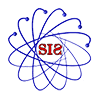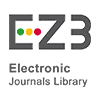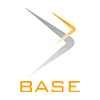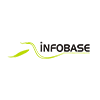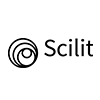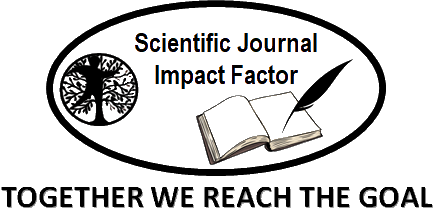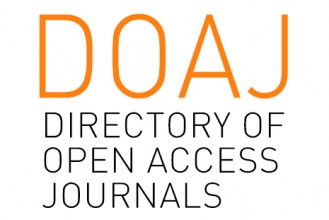The Effectiveness of Contextual Teaching and Learning (CTL) in Improving Students’ Numeracy Skills and Learning Motivation in Junior High School
Abstract
This study aims to describe the effectiveness of contextual and scientific learning in improving students’ numeracy skills and learning motivation in material of SPLDV in junior high school. This research is a quasi-experiment with pretest-posttest nonequivalent control group design. The population in this study was grade VIII junior high school students in Mukomuko, Bengkulu, Indonesia. The samples in this study were students of class VIII A as the experimental and students of class VIII B as the control class. The instruments used in the research was numeracy skill test and learning motivation questionnaire. Data was analyzed using for one sample, followed by one sample t-test. Then data was analyzed using for two independent samples, followed by an independent sample t-test. The results showed that: (1) contextual learning (CTL) was effective in improving students’ numeracy skills and motivation on the material of SPLDV in junior high school, (2) scientific learning was not effective in improving students’ numeracy skills and learning motivation on the material of SPLDV in junior high school, and (3) the differences in effectiveness type of learning occur in numeracy skills, with contextual learning better for improving students' numeracy skills.
Keywords
Full Text:
PDFReferences
Afni, N., & Hartono. (2020). Contextual Teaching and Learning (CTL) as a Strategy to Improve Students Mathematical Literacy. Journal of Physics: Conference Series, 1581(1), 1–8. https://doi.org/10.1088/1742-6596/1581/1/012043
Berns, R. G., & Erickson, P. M. (2001). Contextual Teaching and Learning: Preparing Students for the New Economy. National Academy Press. http://www.nccte.com/publications/infosynthesis/index.
Gökalp, F., & Adem, S. (2020). The Effect of REACT and Computer-Assisted Instruction Model in 5E on Student Achievement of the Subject of Acids, Bases and Salts. Journal of Science Education and Technology, 29(5), 658–665. https://doi.org/10.1007/s10956-020-09844-6
Hagger, M. S., & Hamilton, K. (2018). Motivational Predictors of Students’ Participation in Out-of-School Learning Activities and Academic Attainment in Acience: An application of the trans-contextual model using Bayesian path analysis. Learning and Individual Differences, 67, 232–244. https://doi.org/10.1016/j.lindif.2018.09.002
Haq, M. N., Murdiono, M., Pancasila, P., & Kewarganegaraan, D. (2019). Problematika guru dalam penerapan pendekatan saintifik pada pembelajaran PPKn. Jurnal Civics: Media Kajian Kewarganegaraan, 16(2), 165–176. https://journal.uny.ac.id/index.php/civics/index
Hodgson, C. (2017). Educational Psychology Theory and Practice. Library Press.
Indah, C., Mamonto, E., Pulukadang, R. J., & Manurung, O. (2022). ANALISIS KESALAHAN SISWA DALAM MENYELESAIKAN SOAL SPLDV BERDASARKAN TEORI NEWMAN DI KELAS VIII. ADIBA: JOURNAL OF EDUCATION, 2(4), 571–580.
Junianto. (2019). Perbandingan Keefektifan Pendekatan Contextual Teaching and Learning dan Problem-Based Learning ditinjau dari Minat Belajar dan Literasi Matematis Siswa. Universitas Negeri Yogyakarta.
Kasipahu, M. K., Asrin, & Jaelani, A. K. (2022). Pengaruh Kompetensi Pedagogik Guru dan Motivasi Belajar Siswa Terhadap Kemampuan Numerasi Siswa. JCAR: Journal of Classroom Action Research, 4(2).
Kemendikbudristek. (2024). Keputusan Kemendikbud No 32 tentang Capaian Pembelajaran pada Kurikulum Merdeka.
Kementerian Pendidikan dan Kebudayaan. (2017). Gerakan Literasi Nasional Materi Pendukung Literasi Numerasi. Tim Gerakan Literasi Nasional.
Kristanti, I., Mashuri, A., Oki Ribut Yuda Pradana, dan, Studi Pendidikan Matematika, P., & Modern Ngawi, S. (2022). Analisis Kesalahan Siswa dalam Menyelesaikan Soal Operasi Aljabar Siswa Kelas VII. ANARGYA: Jurnal Ilmiah Pendidikan Matematika, 5(2). http://jurnal.umk.ac.id/index.php/anargya
Niswah, N., & Putri Nur Malasari. (2023). FAKTOR PENYEBAB MOTIVASI BELAJAR MATEMATIKA PADA PESERTA DIDIK. Quadratic: Journal of Innovation and Technology in Mathematics and Mathematics Education, 3(1), 15–19. https://doi.org/10.14421/quadratic.2023.031-03
OECD. (2022). PISA 2022: Mathematics Framework. https://pisa2022-maths.oecd.org/files/PISA%202022%20Mathematics%20Framework%20Draft.pdf
Pusat Asesmen Pendidikan. (2023). Rapor Pendidikan Indonesia 2023.
Pusat Asesmen Pendidikan. (2024). Rapor Pendidikan Indonesia 2024.
Salim, & Prajono, R. (2018). Profil Kemampuan Literasi Matematis Siswa Kelas VIII 1 SMP Negeri 9 Kendari. Indonesian Digital Journal of Mathematics and Education, 5, 594–602. http://idealmathedu.p4tkmatematika.org
Salvia, N. Z., Putri Sabrina, F., & Maula, I. (2022). Analisis Kemampuan Literasi Numerasi Peserta Didik ditinjau dari Kecemasan Matematika. Seminar Nasional Pendidikan Matematika, 351–360.
Sears, S. J., & Hersh, S. B. (1998). Contextual Teaching and Learning: An Overview of the Project. In Contextual Teaching and Learning: Preparing Teachers to Enhance Student Succes in The Workplace and Beyond. ERIC Clearinghouse on Teaching and Teacher Education.
Sinaga, S. J., Hutabarat, G. I. C., Nababan, Y. J., Turnip, F. C., & Hutauruk, A. J. B. (2023). Peningkatan Motivasi Belajar Siswa Melalui Contextual Teaching and Learning (CTL) pada Pembelajaran Perbandingan di SMP Free Methodist 1 Medan. Jurnal Cendekia : Jurnal Pendidikan Matematika, 7(1), 681–694. https://doi.org/10.31004/cendekia.v7i1.1865
Taconis, R., Brok, P., & Pilot, A. (2016). Teachers Creating Context-Based Learning Environments in Science. Sense Publishers.
DOI: http://dx.doi.org/10.18415/ijmmu.v12i9.7018
Refbacks
- There are currently no refbacks.
Copyright (c) 2025 International Journal of Multicultural and Multireligious Understanding

This work is licensed under a Creative Commons Attribution-NonCommercial-NoDerivatives 4.0 International License.
https://ijmmu.com
editor@ijmmu.com
facebook.com/ijmmu
Copyright © 2014-2018 IJMMU. All rights reserved.










